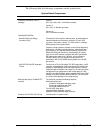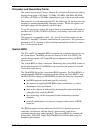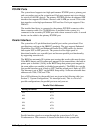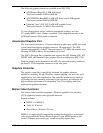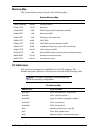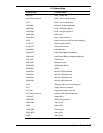
System Board 4-15
Serial Interface
The system has two 16C550 UART compatible serial ports (COM1 and COM2)
integrated on the I/O controller. The serial ports support the standard RS-232C
interface. The buffered high-speed serial ports support transfer rates up to
115.2 KB. These ports allow the installation of high-speed serial devices for
faster data transfer rates.
Sets of I/O addresses for the two channels are given in the following table (see
Section 2, “System Configuration,” for interrupt levels). Soft-selectable base
addresses are 3F8h, 2F8h, 3E8h, and 2E8h.
Serial Port 1 and Serial Port 2 I/O Addresses
Starting I/O Address Port
3F8 COM1
2F8 COM2
3E8 COM3
2E8 COM4
3F8 COM1
2F8 COM2
3E8 COM3
2E8 COM4
See Section 2, “System Configuration,” for information on resetting the port
through the BIOS Setup utility. See Section 9, “Specifications,” for the serial
interface specifications.
Serial interface signals are output through the system board’s 9-pin,
D-subconnectors. The connectors are located at the back of the system unit.
USB Interface
The Universal Serial Bus (USB) ports allow new Plug and Play serial devices to
be added without having to open the system. One USB device may be plugged
into each USB port for direct system connection. With a hub and the proper
cabling, up to 127 USB devices per port can be addressed by the system. The
USB determines system resources for each peripheral and assigns them without
user intervention. Boot support for a USB keyboard is present so the system can
be booted with a USB keyboard instead of a standard keyboard.
Graphics Capabilities
The system supports AGP boards and PCI graphics boards. A PCI graphics
board installs in one of the computer’s PCI expansion slots. An AGP board
installs in the system board’s AGP slot.







